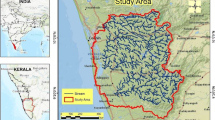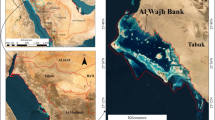Abstract
Poyang Lake is a freshwater lake in China which is a vital winter habitat for many kinds of wildlife and a critical component of the regional ecology. Here, we use Landsat satellite imagery to systematically assess habitat characteristic changes from 1990 to 2021. Four machine learning methods including random forest (RF), gradient boosting tree (GBT), support vector machine (SVM) and classification and regression trees (CART) are analyzed by comparing the overall accuracy and Kappa coefficients. The results show that the accuracy of random forest is higher than that of the other three machine learning methods. The long-term characteristics of Poyang Lake winter habitat types are extracted from Landsat satellite images using the RF method. These results show that the mudflat area was larger than water surface and sand. After 2012, more mudflat area had been converted into grassland, which is related to the early onset of the winter dry season in the Poyang Lake area. The habitats were scattered and fragmented from 1990 to 1998; after 1997–1998, however, the degree of landscape patch density and interference decreased, indicating a decreased impact of human-related interference and natural factors on the evolution of habitats in and around Poyang Lake.
Similar content being viewed by others
References
Chen B, Chen L, Huang B, Michishita R, Xu B (2018). Dynamic monitoring of the Poyang Lake wetland by integrating Landsat and MODIS observations. ISPRS J Photogramm Remote Sens, 139: 75–87
Feng L, Hu C, Chen X, Cai X, Tian L, Gan W (2012). Assessment of inundation changes of Poyang Lake using MODIS observations between 2000 and 2010. Remote Sens Environ, 121: 80–92
Feng Y, Luo G, Zhou D, Han Q, Lu L, Xu W, Zhu L, Yin C, Dai L, Li Y (2010). Effects of land use change on landscape pattern of a typical arid watershed in the recent 50 years: a case study on Manas River Watershed in Xinjiang. Acta Ecol Sin, 30(16): 4295–4350
Jia K, Liang S, Wei X, Yao Y, Su Y, Jiang B, Wang X (2014). Land cover classification of Landsat data with phenological features extracted from time series MODIS NDVI data. Remote Sens (Basel), 6(11): 11518–11532
Jing Y, Zhang S, Li Y (2008). Ecological risk analysis of rural-urban ecotone based on landscape structure. Chinese J Eco, 27(2): 229–234 (in Chinese)
Kanai Y, Ueta M, Germogenov N, Nagendran M, Mita N, Higuchi H (2002). Migration routes and important resting areas of Siberian cranes (Grus leucogeranus) between northeastern Siberia and China as revealed by satellite tracking. Biol Conserv, 106(3): 339–346
Kaufman Y J, Tanre D (1992). Atmospherically resistant vegetation index (ARVI) for EOS-MODIS. IEEE Trans Geosci Remote Sens, 30(2): 261–270
Khadka S, Gyawali B R, Shrestha T B, Cristan R, Banerjee S B, Antonious G, Poudel H P (2021). Exploring relationships among landownership, landscape diversity, and ecological productivity in Kentucky. Land Use Policy, 111: 105723
Li H, Fang C, Xia Y, Liu Z, Wang W (2022). Multi-scenario simulation of production-living-ecological space in the Poyang Lake area based on remote sensing and RF-Markov-FLUS model. Remote Sens (Basel), 14(12): 2830
Li J, Zhou K, Dong H, Xie B (2020a). Cultivated land change, driving forces and its impact on landscape pattern changes in the Dongting Lake Basin. Int J Environ Res Public Health, 17(21): 7988
Li X, Li J (2018). Analysis on region landscape ecological risk based on GIS - a case study along the lower reaches of the Weihe River. Arid Zone Res, 25(6): 899–903 (in Chinese)
Li J, Zhou K, Dong H, Xie B (2020b). Cultivated land change, driving forces and its impact on landscape pattern changes in the Dongting Lake Basin. Int J Environ Res Public Health, 17(21): 7988
Li P, Zuo D, Xu Z, Zhang C, Han Y, Sun W, Pang B, Ban C, Kan G, Yang H (2021). Dynamic changes of land use/cover and landscape pattern in a typical alpine river basin of the Qinghai-Tibet Plateau, China. Land Degrad Dev, 32(15): 4327–4339
Li Y, Sun X, Zhu X, Cao H (2010). An early warning method of landscape ecological security in rapid urbanizing coastal areas and its application in Xiamen, China. Ecol Modell, 221(19): 2251–2260
Liu H, Huete A (1995). A feedback based modification of the NDVI to minimize canopy background and atmospheric noise. IEEE Trans Geosci Remote Sens, 33(2): 457–465
Liu H, Yuan H, Wang S, Zheng L, Liao M (2021). Spatiotemporal dynamics of water body changes and their influencing factors in the seasonal lakes of the Poyang Lake region. Water, 13(11): 1539
Mu S, Li B, Yao J, Yang G, Wan R, Xu X (2020). Monitoring the spatio-temporal dynamics of the wetland vegetation in Poyang Lake by Landsat and MODIS observations. Sci Total Environ, 725: 138096
Naveh Z (1994). From biodiversity to ecodiversity: a landscape-ecology approach to conservation and restoration. Restor Ecol, 2(3): 180–189
Pal M (2008). Ensemble of support vector machines for land cover classification. Int J Remote Sens, 29(10): 3043–3049
Shao Y, Lunetta R S (2012). Comparison of support vector machine, neural network, and CART algorithms for the land-cover classification using limited training data points. ISPRS J Photogramm Remote Sens, 70: 78–87
Tang X, Li H, Xu X, Yang G, Liu G, Li X, Chen D (2016). Changing land use and its impact on the habitat suitability for wintering Anseriformes in China’s Poyang Lake region. Sci Total Environ, 557–558: 296–306
Wang J, Ogawa S (2017). Analysis of dynamic changes in land use based on landscape metrics in Nagasaki, Japan. J Appl Remote Sens, 11(1): 016022
Xia S, Liu Y, Wang Y, Chen B, Jia Y, Liu G, Yu X, Wen L (2016). Wintering waterbirds in a large river floodplain: hydrological connectivity is the key for reconciling development and conservation. Sci Total Environ, 573: 645–660
Xu H (2006). Modification of normalized difference water index (NDWI) to enhance open water features in remotely sensed imagery. Int J Remote Sens, 27(14): 3025–3033
Yang W, You Q, Fang N, Xu L, Zhou Y, Wu N, Ni C, Liu Y, Liu G, Yang T, Wang Y (2018). Assessment of wetland health status of Poyang Lake using vegetation-based indices of biotic integrity. Ecol Indic, 90: 79–89
Yao J, Zhang Q, Ye X, Zhang D, Bai P (2018). Quantifying the impact of bathymetric changes on the hydrological regimes in a large floodplain lake: Poyang Lake. J Hydrol (Amst), 561: 711–723
Zang S, Liang X, Zhang S (2005). GIS- based analysis of ecological risk on land use in Daqing City. J Nat Disast, 14(4): 141–145 (in Chinese)
Zha Y, Ni S, Yang S (2003). An effect approach to automatically extract urban land-use from TM imagery. J Remote Sens, 7(1): 37–40+82 (in Chinese)
Zhang Q, Fu B, Chen L (2003). Several problems about landscape pattern change research. Sci Geograph Sin, 3: 264–270 (in Chinese)
Zhang Q, Li L, Wang Y, Werner A D, Xin P, Jiang T, Barry D A (2012). Has the Three-Gorges Dam made the Poyang Lake wetlands wetter and drier?. Geophys Res Lett, 39(20): 2012GL053431
Zhang T, Gao Y, Li C, Xie Z, Chang Y, Zhang B (2020). How human activity has changed the regional habitat quality in an eco-economic zone: evidence from Poyang Lake eco-economic zone, China. Int J Environ Res Public Health, 17(17): 6253
Zhao S, Fang J, Ji W, Tang Z (2003). Lake restoration from impoldering: impact of land conversion on riparian landscape in Honghu Lake area, Central Yangtze. Agric Ecosyst Environ, 95(1): 111–118
Zhou H, Luo Z, Tangdamrongsub N, Zhou Z, He L, Xu C, Li Q, Wu Y (2018). Identifying flood events over the Poyang Lake Basin using multiple satellite remote sensing observations, hydrological models and in situ data. Remote Sens (Basel), 10(5): 713
Zhou Y, Ma J, Zhang Y, Li J, Feng L, Zhang Y, Shi K, Brookes J D, Jeppesen E (2019). Influence of the Three Gorges Reservoir on the shrinkage of China’s two largest freshwater lakes. Global Planet Change, 177: 45–55
Acknowledgments
This study is supported by the National Basic Research Program of China (No. 2021YFB3900400)
Author information
Authors and Affiliations
Corresponding author
Rights and permissions
About this article
Cite this article
Qi, S., Pan, J. & Devlin, A.T. Long-term evolution of winter habitats in Poyang Lake derived from satellite imagery using machine learning methods. Front. Earth Sci. (2023). https://doi.org/10.1007/s11707-022-1052-8
Received:
Accepted:
Published:
DOI: https://doi.org/10.1007/s11707-022-1052-8




